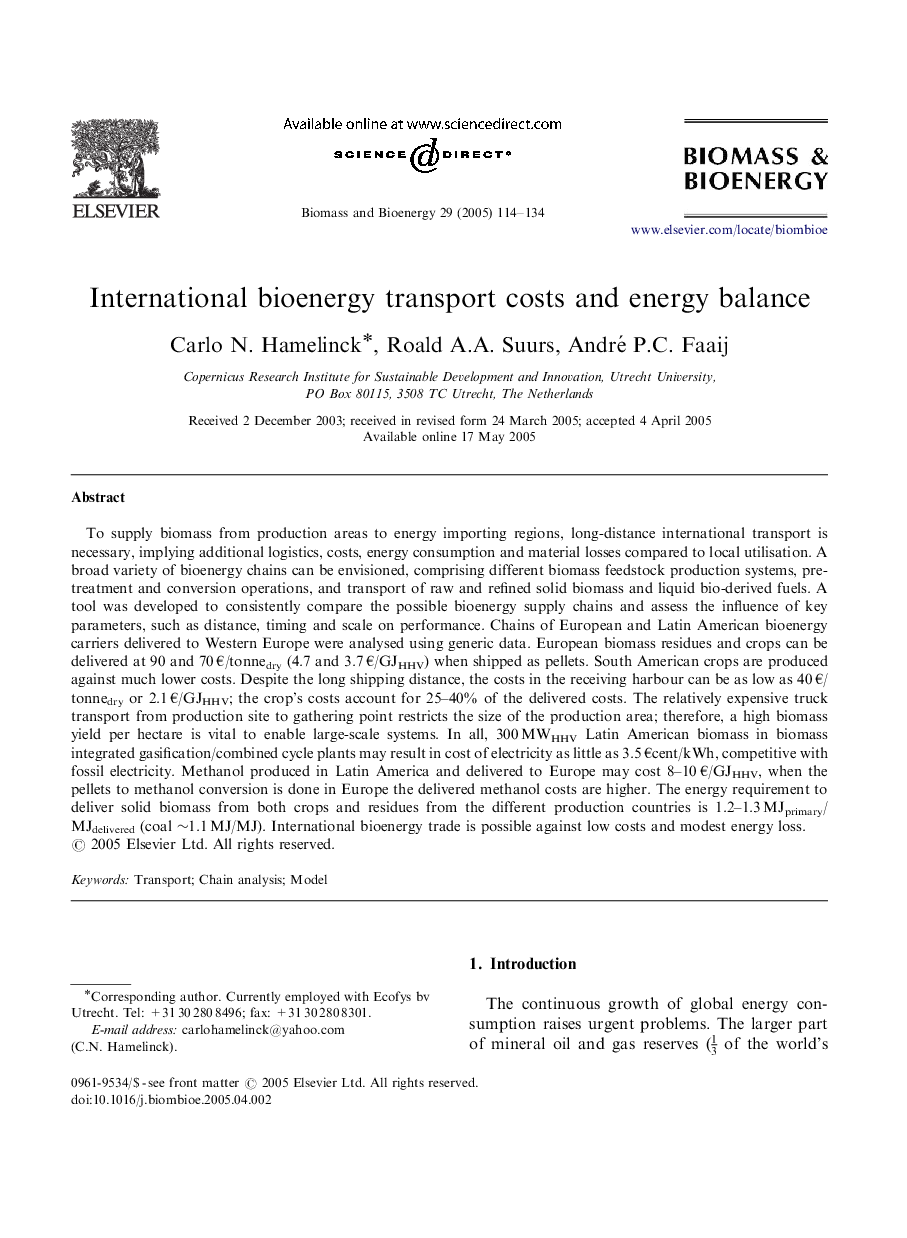| Article ID | Journal | Published Year | Pages | File Type |
|---|---|---|---|---|
| 10393944 | Biomass and Bioenergy | 2005 | 21 Pages |
Abstract
To supply biomass from production areas to energy importing regions, long-distance international transport is necessary, implying additional logistics, costs, energy consumption and material losses compared to local utilisation. A broad variety of bioenergy chains can be envisioned, comprising different biomass feedstock production systems, pre-treatment and conversion operations, and transport of raw and refined solid biomass and liquid bio-derived fuels. A tool was developed to consistently compare the possible bioenergy supply chains and assess the influence of key parameters, such as distance, timing and scale on performance. Chains of European and Latin American bioenergy carriers delivered to Western Europe were analysed using generic data. European biomass residues and crops can be delivered at 90 and 70 â¬/tonnedry (4.7 and 3.7 â¬/GJHHV) when shipped as pellets. South American crops are produced against much lower costs. Despite the long shipping distance, the costs in the receiving harbour can be as low as 40 â¬/tonnedry or 2.1 â¬/GJHHV; the crop's costs account for 25-40% of the delivered costs. The relatively expensive truck transport from production site to gathering point restricts the size of the production area; therefore, a high biomass yield per hectare is vital to enable large-scale systems. In all, 300 MWHHV Latin American biomass in biomass integrated gasification/combined cycle plants may result in cost of electricity as little as 3.5 â¬cent/kWh, competitive with fossil electricity. Methanol produced in Latin America and delivered to Europe may cost 8-10 â¬/GJHHV, when the pellets to methanol conversion is done in Europe the delivered methanol costs are higher. The energy requirement to deliver solid biomass from both crops and residues from the different production countries is 1.2-1.3 MJprimary/MJdelivered (coal â¼1.1 MJ/MJ). International bioenergy trade is possible against low costs and modest energy loss.
Keywords
Related Topics
Physical Sciences and Engineering
Chemical Engineering
Process Chemistry and Technology
Authors
Carlo N. Hamelinck, Roald A.A. Suurs, André P.C. Faaij,
